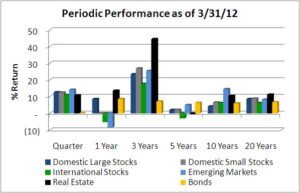“The interests of the client continue to be sidelined in the way the firm operates and thinks about money.” This is a direct quotation from Greg Smith’s recent op-ed that he penned after stepping down as a senior executive of Goldman Sachs. Holding himself up as a man of integrity, Mr. Smith couldn’t stand working there any longer because “the environment now is as toxic and destructive as I have ever seen it,” and he no longer had personal beliefs that aligned with the firm he had once so passionately supported.
However, this news should not come as a big shock to everyone. Goldman Sachs, Bear Sterns, Merrill Lynch, Wells Fargo and the many other large financial institutions alike have a priority to their shareholders, and that is to make a profit. Greg Smith stated “if you make enough money for the firm you will be promoted to a position of influence” and later went on to add that the most common question he received from junior analysts was, “how much money did we make off the client?” Mr. Smith claims that clients are referred to as “muppets” by senior staff, suggesting that those clients are oblivious to their sole purpose of providing profit for the firm!
According to a study by Harvard and MIT economists, many financial advisors are often more likely to give advice that will lead to higher fees for them than higher returns for their customers. These economists sent hundreds of actors to financial advisory firms and found that in many cases those advisors steered their clients away from a logical investment and instead into one that produced more fees.
Former Bear Stearns CEO Alan Greenberg once said that he would not hold an M.B.A. against prospective hires, but that he much preferred job candidates with a P.S.D. – his term, which is short for Poor, Smart, with a Desire to be rich. After graduating from Cornell University with a degree in Economics, I was eager to put my newfound love for finance to the test in my first job with a well-known national investment firm. However, much to my surprise, the three-week training that came with the position was spent solely on sales techniques. A few weeks later, after bringing in several clients, I then realized that I had no clue what to do next in regards to investing their money!
So what can individual investors do to avoid being a “muppet” for the firm they decide to work with?
Here are a few qualities to seek:
Fiduciary. They act only in your best interest; a fiduciary relationship means we’re legally obligated to do so. Registered Investment Advisory firms are held to a fiduciary standard. This is not the case with others such as insurance companies or broker/dealers.
Fee-only. Their compensation is fully disclosed, fairly priced, and paid strictly by you, their client. Fee-only advisors accept no commissions or other types of incentives from outside sources to distract them from serving as your fiduciary.
Having worked at a brokerage firm prior to my time here at Rockbridge, I personally understand Mr. Smith’s frustration. This is one of the reasons that I am so passionate about our firm’s investment philosophy and the fiduciary standard that we hold ourselves to as fee only investment advisors. At Rockbridge, we have a strong desire to do right by our clients and carry forward the belief that the “Golden Rule” applies to all that we do, including financial planning!



